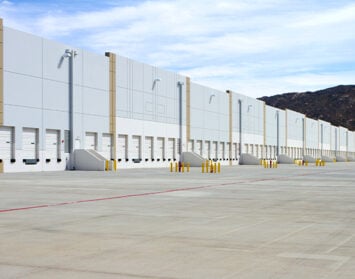While more and more US companies are mandating that employees return to the office, American workers still lag behind their global counterparts in doing so.
“America’s commercial tenants are experiencing an atrophy of office use, and building back a strong in-office workplace will take time and steady effort,” says Jason Hughes. Hughes is the CEO and co-founder of Hughes Marino, a national corporate real estate advisory firm that exclusively represents tenants. He says that, “The pandemic changed the status quo and brought about an employee revolution.”
At last tally, the United States trailed other countries in returning to the office, with JLL reporting “Return To Office” (RTO) in Europe and the Middle East hovering between 70%-90%, and the trend is even higher in Asia. For comparison, the US has only reached between 40%-60%.
There are a few reasons for that. Americans generally have larger homes, which often translates into more physical space to work. Homes in Asia and in many European capitals are more expensive and therefore smaller. People are happy to get out and into a dedicated office space. The commute plays a role as well. In the US, getting to work often requires a car plus time on a busy freeway, whereas in the rest of the world, public transportation can make the commute smoother. Finally, America has a stronger job market, with 3.5% unemployment in July compared to 6.4% in the EU and 5.3% in China. Consequently, if an American worker is unhappy with their current employer’s RTO policy, that worker may have an easier time finding a job without one.
Despite a growing number of organizations asking team members to show up in person, Kastle Systems card tracking data shows the percentage of US in-office traffic this year has hovered around 50% of pre-pandemic levels. This vanishing workforce has had a negative effect on the economies of many metro areas in the US. LinkedIn reports that as a result, foreign metro areas have enjoyed a lift given the number of returning workers who spend money on transportation and food.
The question of productivity also comes into play when discussing WFH vs. RTO. While scores of remote workers will testify that they are equally—if not more—productive at home, the US Bureau of Labor Statistics reports that over the past two years productivity has declined 1.9%. That is the deepest two-year decline in more than 75 years. Other studies echo the belief that remote work lacks the effectiveness of in-person interaction. A recent study at Stanford found that teams working in person produce about 15% more ideas. Companies are taking note and becoming firmer in their RTO policies. For example, ResumeBuilder cites its survey of 1,000 corporate decision-makers who noted that 28% of respondents would fire an employee if they did not comply with the company’s RTO mandates.
While the above statistics may seem aggressive, many companies are finding common ground with their workers by supporting a hybrid schedule. As of July, nearly one-third of the country’s full-time workers were in hybrid arrangements, spending some days working from home and some in an office, according to researchers at Stanford.
Being in the commercial real estate industry, Hughes Marino has found a compromise and taken a hybrid approach for their own workforce. Jason Hughes notes, “In a three-day model, if half of the team chooses to work in-office Monday through Wednesday while the other half of the team opts for Wednesday through Friday, then the team is only all together in the office one day each week,” he explains. “And that just isn’t enough time together for the kind of interaction, team building and collaboration that has fueled our award-winning team culture from day one. With the four-day in-office work model, we are guaranteed at least three days during which everyone will be gathered together.”
Amazon CEO Andrew Jassy said at a recent company meeting that it is past time to get employees back to the office at least three days a week. And if a team member can’t commit to that schedule, then, according to Jassy, “it’s probably not going to work out for you at Amazon because we are going back to the office.”
Even Zoom, the poster child for remote work, is requiring many of its 7,400 employees to come back to the office. And while office vacancies have been up these past few years, there’s some evidence that the growing number of American firms that are serious about getting team members back in the office is resulting in an increase in the need for office space. Many who shed square footage during the pandemic are now in the hunt for space. A recent article in Bisnow notes how AT&T, Snap (parent company of Snapchat), Snowflake and Toast have all been looking for leases to accommodate their returning team members.
While the US is still behind the rest of the world in returning to the office, we’re slowly catching up. And while it may never be 100% of employees back five days a week, the trend is becoming clearer that America’s workers are, indeed, returning to a more collaborative, interactive, face-to-face work experience.
Let the camaraderie and mentorship resume!









